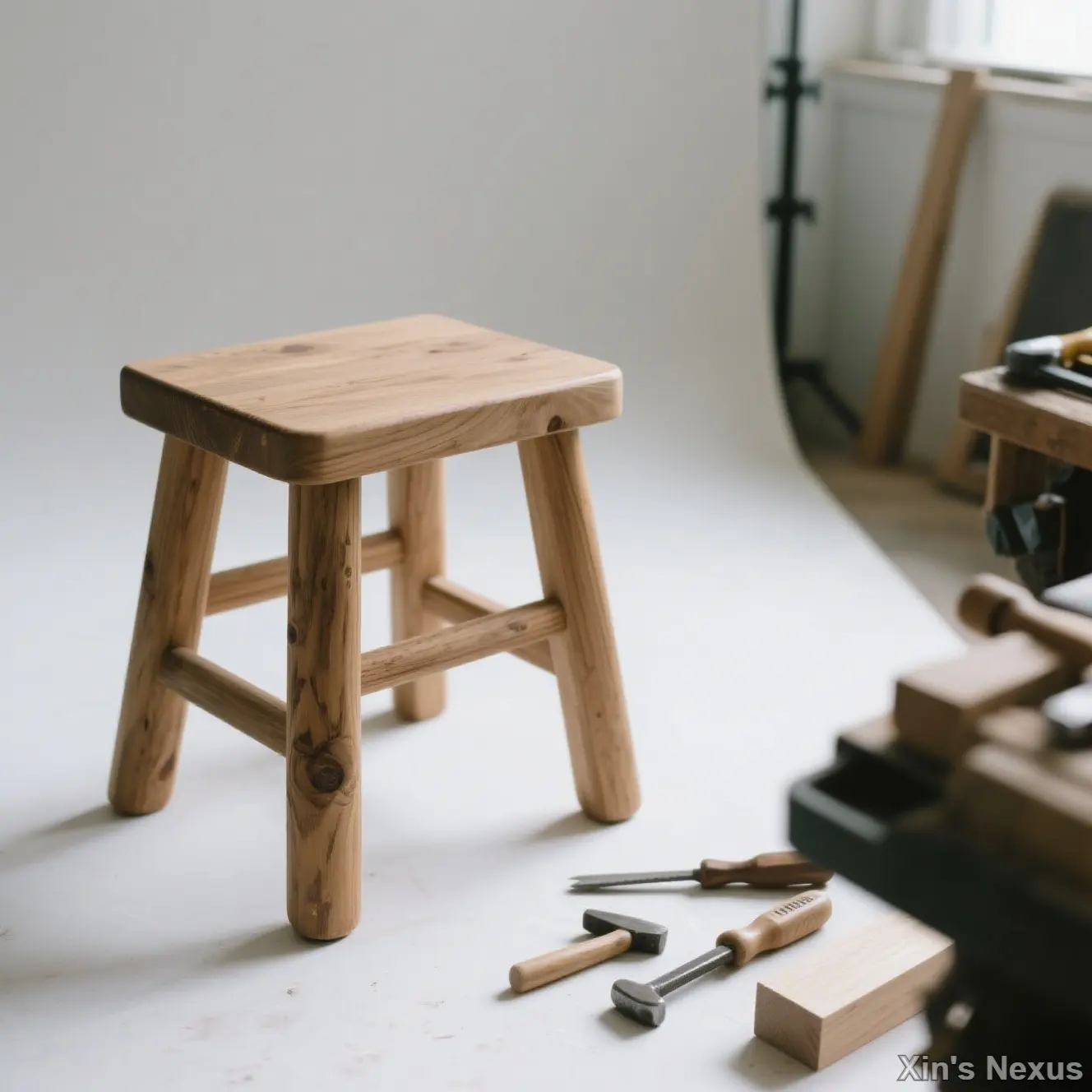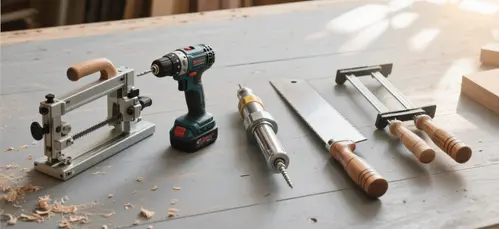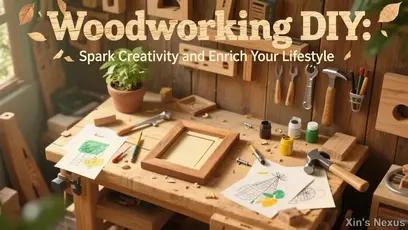Easy Woodworking DIY:Crafting Your Own Wooden Masterpieces Effortlessly
Easy woodworking DIY is an accessible activity that allows individuals, whether they’re beginners or hobbyists with some prior experience, to create unique wooden items right at home. By learning fundamental woodworking techniques, you not only enhance your hands-on skills but also boost the aesthetic appeal and functionality of your living space. This guide will walk you through the essential knowledge and techniques of easy woodworking DIY, helping you kickstart your woodworking journey with ease.
The Basics of Easy Woodworking DIY
Easy woodworking DIY, or “Do It Yourself,” involves creating wooden products using basic tools and materials, without the need for professional-level woodworking skills. This approach not only saves money but also offers a deep sense of fulfillment as you watch your creation come to life. For many, easy woodworking DIY serves as a relaxing outlet and a platform to express creativity. Here are some simple woodworking DIY projects suitable for enthusiasts of all skill levels.
Woodworking Projects for Beginners

For those new to woodworking, starting with simple items is the best way to go. Projects like bookshelves, small stools, or basic plant stands are ideal. These beginner-friendly projects help you build confidence and gradually familiarize yourself with tools and materials. It’s advisable to begin with small-scale projects to master tool usage and understand the characteristics of different woods.
Essential Tools You Need
_cleanup.9gwumuvxl8.webp)
Before diving into easy woodworking DIY, it’s crucial to gather the necessary tools. While you don’t need highly specialized equipment, basic safety gear and common tools are essential. Here’s a list of fundamental woodworking tools:
| Tool Name | Function |
|---|---|
| Saw | Used for cutting wood |
| Electric Drill | Used for drilling holes and inserting screws |
| Bar Clamps | Used to hold wood pieces firmly in place |
| Sandpaper | Used to smooth wood surfaces |
| Level | Used to ensure objects are perfectly flat and aligned |
Selecting the Right Materials
_cleanup.26lrbt4clg.webp)
Choosing suitable wood is key to the success of any woodworking project. For easy woodworking DIY, it’s recommended to use wooden strips with a thickness of over 1 centimeter, such as spruce or pine. These types of wood are not only easy to work with but also offer good strength. Understanding the properties of various woods will assist you in making informed decisions when selecting materials.
Preparing for Your Woodworking Project
Thorough planning is vital before you start crafting. Setting clear goals and creating a rough blueprint can significantly improve your efficiency. Whether you’re determining dimensions, choosing colors, or designing the shape, proper preparation streamlines the entire process.
The Importance of Design Blueprints
_cleanup.1zijgdi75m.webp)
A well-crafted design blueprint clarifies your woodworking project and reduces errors caused by poor planning. During the design phase, it’s essential to consider both functionality and aesthetics. If you’re not confident in your drawing skills, you can find online templates to help you formulate your plan.
Calculating Material Requirements
Estimating the quantity of materials needed is another crucial pre-project step. This practice prevents waste and ensures that each stage of the project progresses smoothly. You can use a calculator or simple manual calculations for this purpose.
Fundamental Woodworking Techniques
_cleanup.8l0d7em94l.webp)
Once you start the actual crafting process, mastering basic techniques can enhance your efficiency and the quality of your final product. In woodworking, cutting, gluing, and fastening are three fundamental skills that require practice and patience.
Cutting Techniques
Cutting is a basic yet critical task in woodworking. Precise cuts ensure that all components fit together seamlessly. Whether you’re using a handsaw or an electric saw, it’s important to work carefully and maintain stability. It’s advisable to mark clear cutting lines with a ruler before starting to cut for more accurate results.
Gluing and Fastening Techniques
Gluing and fastening are the processes of joining different components together. Selecting the right wood glue and understanding its drying time is essential. Using clamps to hold the wood pieces in place while the glue dries prevents them from shifting, ensuring a strong bond.
Enhancing and Finishing Your Woodwork
_cleanup.6f0ylmuld9.webp)
After completing the basic woodworking, the next step is to enhance and finish your creation. This not only improves the appearance of the wooden item but also protects the wood.
Sanding and Refining
Sanding is a necessary step for every woodworking project, as it smoothens the wood surface. Start with coarse sandpaper and gradually move to finer grits. Sanding in the direction of the wood grain not only enhances the visual appeal but also provides a smoother finish.
Choosing the Right Finish
There’s a wide range of paints and finishes available, such as wood varnish and clear lacquer. Select a finishing material based on your personal preference and the intended use of the item. Before applying the finish, make sure the surface is dry and clean to avoid any impurities affecting the final result.
Practical Examples of Easy Woodworking DIY
_cleanup.4jodt0i5r8.webp)
Let’s explore some real-life easy woodworking DIY projects that can inspire you to start crafting:
DIY Plant Stand
A simple plant stand is a popular DIY project. With just a few wooden strips and basic tools, you can create a unique stand. You can design it with multiple tiers to add more greenery to your space.
Custom Desk or Worktable
If you need a personalized workspace, consider designing and building your own desk. Choose your preferred style and materials to create a workspace that perfectly suits your needs.
Storage Shelves
Storage shelves offer endless design possibilities. Using basic woodworking techniques, you can create customized storage solutions that help organize your space and bring order to your life.
Frequently Asked Questions
What tools are required for easy woodworking DIY?
Easy woodworking DIY typically requires basic tools such as saws, electric drills, sandpaper, clamps, and levels. These tools are sufficient for a wide range of woodworking projects.
Where can beginners start learning woodworking?
Beginners can start by watching online tutorials, reading DIY books, or enrolling in woodworking courses. Practicing basic techniques through simple projects is the best approach.
What are the recommended materials for easy woodworking DIY?
Opt for wooden strips thicker than 1 centimeter, such as spruce or pine. These materials are easy to work with and have adequate strength, making them perfect for beginner DIY projects.






